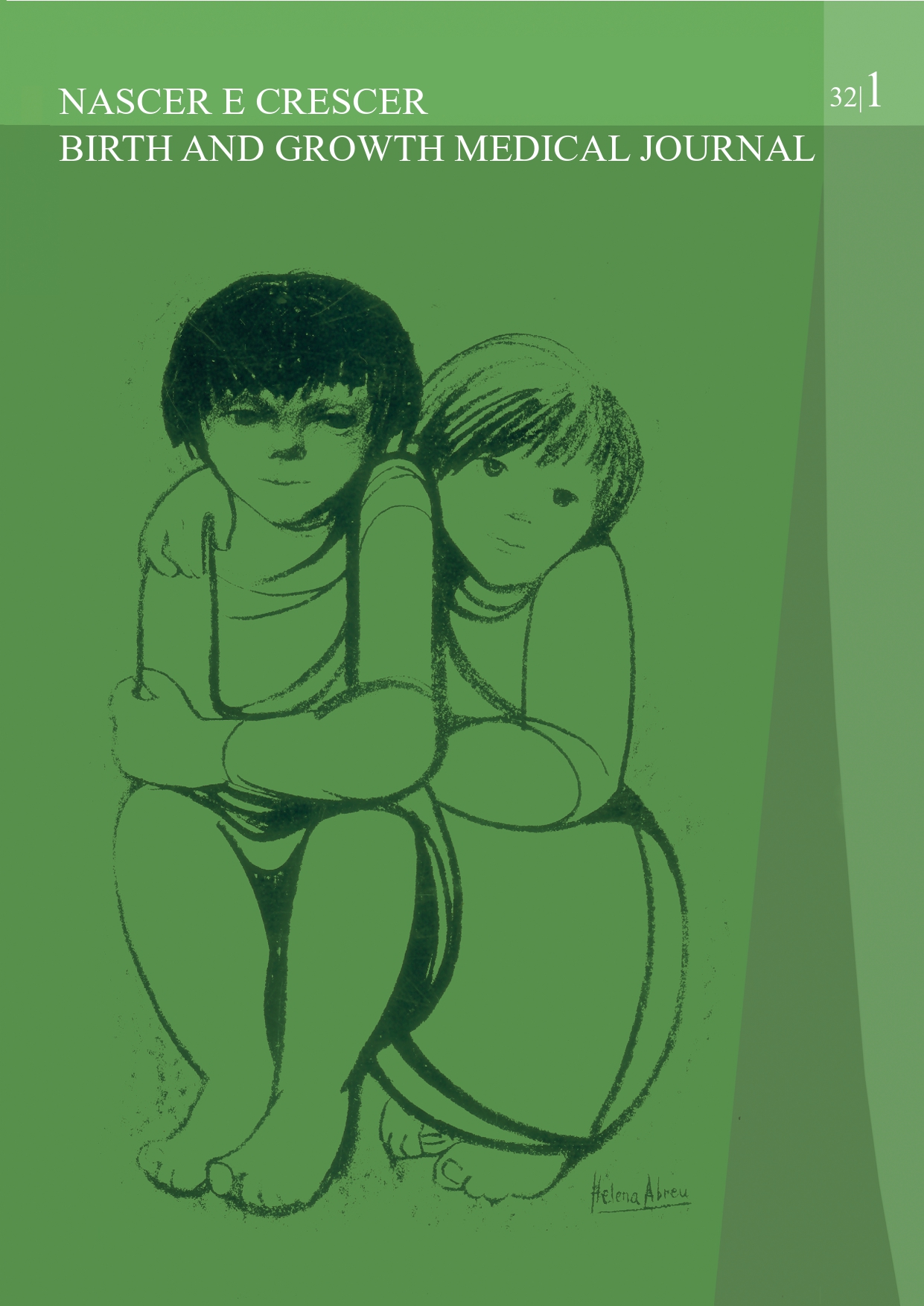Baby trich: the role of psychosocial stressors in pediatric trichotillomania
DOI:
https://doi.org/10.25753/BirthGrowthMJ.v32.i1.25718Keywords:
pediatric, psychoeducation, psychosocial stressor, psychotherapy, trichotillomaniaAbstract
Pediatric trichotillomania is characterized by the persistent pulling of one’s own hair, resulting in areas of hair loss and affecting the child and family’s daily functioning. Studies investigating the etiology, evolution, and treatment of pediatric trichotillomania are scarce. Scientific data suggests that pediatric trichotillomania can persist into adulthood and indicate the role of external stressors in its etiology. This article describes five clinical cases of children aged between 21 months and four years diagnosed with pediatric trichotillomania, with several external stressors as possible etiology. Psychoeducation and caregiver-child psychotherapy or child-centered play therapy were proposed as treatments. The authors highlight the importance of external stressors in the etiology of pediatric trichotillomania and suggest the beneficial effect of psychoeducation and psychotherapy in its course. Further research is critical to improve the screening and treatment of pediatric trichotillomania.
Downloads
References
American Psychiatric Association. American Psychiatric Association: Diagnostic and Statistical Manual of Mental Disorders: Diagnostic and Statistical Manual of Mental Disorders 5th Edition. Arlington;2013.
Zero to Three Organization. DC:0-5: Diagnostic classification of mental health and developmental disorders of infancy and early childhood. Washington DC; 2016.
Rettew D, Swedo S, Leonard H, Lenane M, Rapoport J. Obsessions and compulsions across time in 79 children and adolescents with obsessive-compulsive disorder. J Am Acad Child Adolesc Psychiatry. 1992; 31:1050-6.
Diefenbach G, Mouton-Odom S, Stanley A. Affective correlates of trichotillomania. Behav Res Ther. 2002; 40:1305-15.
Walther M, Snorrason I, Flessner C, Franklin M, Burkel R, Woods D. The trichotillomania Project in young children (TIP-YC): clinical characteristics, comorbidity, functional impairment and treatment utilization. Child Psychiatry & Human Development. 2014;45:24-31.
Sperling M. Trichotillomania, trichophagy, and cyclic vomiting: a contribution to the psychopathology of female sexuality. The Internation Journal of Psychoanalysis. 1968;49: 682-90.
Nisha S, Novak J, Iorizzo M, Grimalt R, Oranje A. Trochotillomania in children. Skin Appendage Disord. 2015;1:18-24.
Franklin M, Tolin D. Treating thricotillomania: cognitive-behavioral therapy for hairpulling and related problems. New York: Springer; 2007.
Park J, Rahman O, Murphy T, Storch E. Early childhood trichotillomania: initial considerations on phenomenology, treatment, and future directions. Infant Mental Health Journal. 2012;33:163-72.
Byrd M, Rcihards D, Hove G, Friman P. Treatment of early onsent hair pulling as a simple habit. Behav. Modif.2002;26:400-11.
Lecannelier, F. Estrategias de intervención temprana en salud mental. Revista Psicologia & Psicologia. Disponível em: https://www.researchgate. net/publication/228385341.
Fonagy, P. Prevention, the appropriate target of infant psychotherapy. Infant Mental Health Journal. 1998:19:124-50.
Cramer B, Palacio-Espasa, F. Técnicas psicoterápicas mãe-bebê. Porto Alegre: Artes Médicas; 1993.
Gershuny S, Keuthen N, Gentes E, Russo A, Emmott E, Jameson M, et al. Current posttraumatic stress disorder and history of trauma in trichotillomania. J Clin Psychol. 2006;62: 1521–9.
Monroe J, Abse D. The psychopatology of trichotillomania and trichophagy. Psyhciatry. 1963;26: 95-103.
Buxbaum E. Hair pulling and fetichism. The Psychoanalytic Study of the Child. 1960;15:243-60.
Robinowitz C. Thricotillomania. Basic handbook of child psychiatry Vol. II. New York: Basic Books; 1969.
Mannino F, Delgado R. Trichotillomania in children: a review. The American Journal of Psychiatry. 1969; 126: 505-11.
VanFleet R, Sywulak A, Sniscak C. Child-centered Play Therapy. New York: The Guilford Press; 2010.
Downloads
Published
How to Cite
Issue
Section
License
Copyright (c) 2023 Mariana Falcão, Patrícia Magalhães, Teresa Sá, Mariana Liz, Marta Antunes, Ana Filipa Lopes, Ana Filipa Silva, Vânia Martins

This work is licensed under a Creative Commons Attribution-NonCommercial 4.0 International License.
Copyright and Authors' Rights
All articles published in Nascer e Crescer - Birth and Growth Medical Journal are Open Access and comply with the requirements of funding agencies or academic institutions. For use by third parties, Nascer e Crescer - Birth and Growth Medical Journal adheres to the terms of the Creative Commons License "Attribution - Non-Commercial Use (CC-BY-NC)".
It is the author's responsibility to obtain permission to reproduce figures, tables, etc. from other publications.
Authors must submit a Conflict of Interest statement and an Authorship Form with the submission of the article. An e-mail will be sent to the corresponding author confirming receipt of the manuscript.
Authors are permitted to make their articles available in repositories at their home institutions, provided that they always indicate where the articles were published and adhere to the terms of the Creative Commons license.


